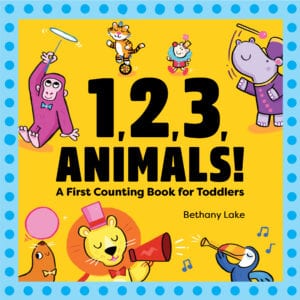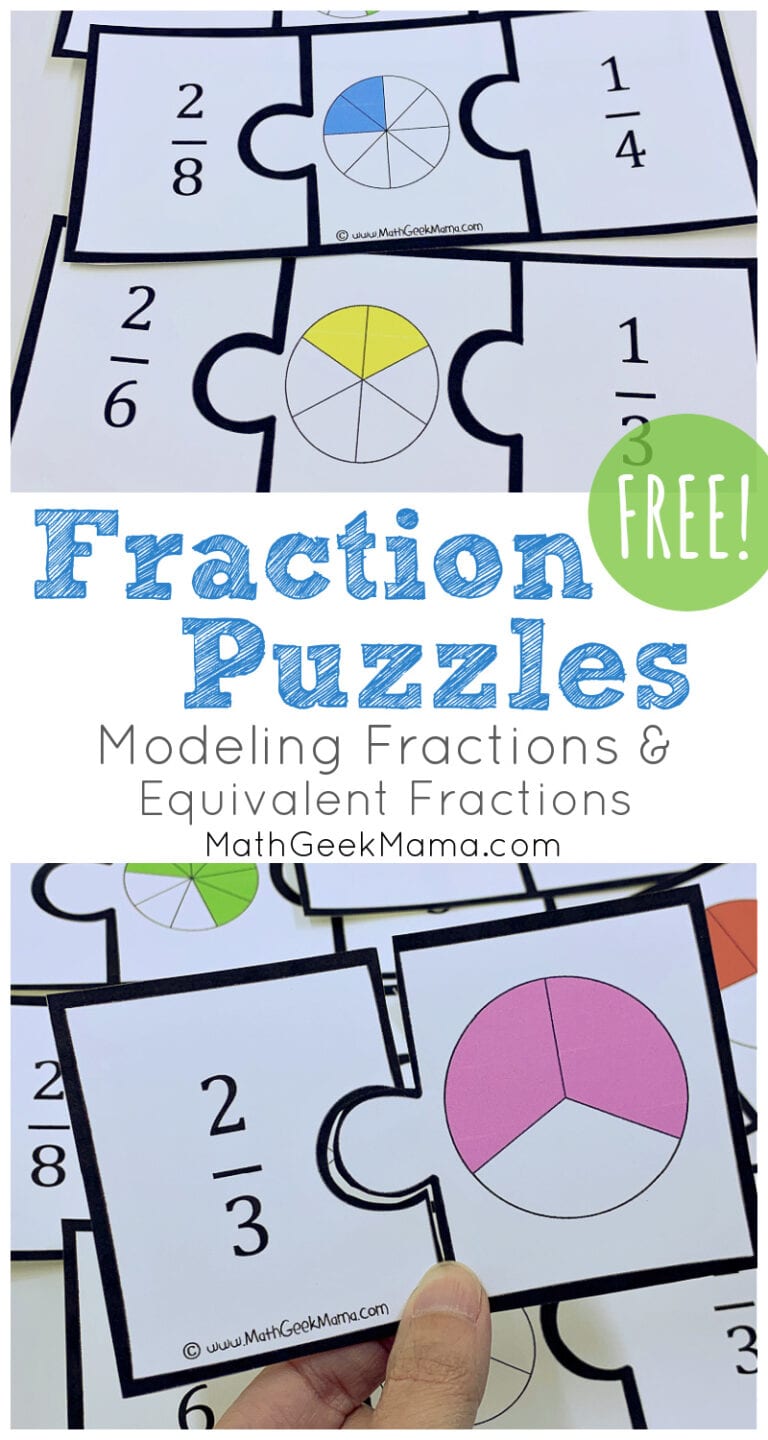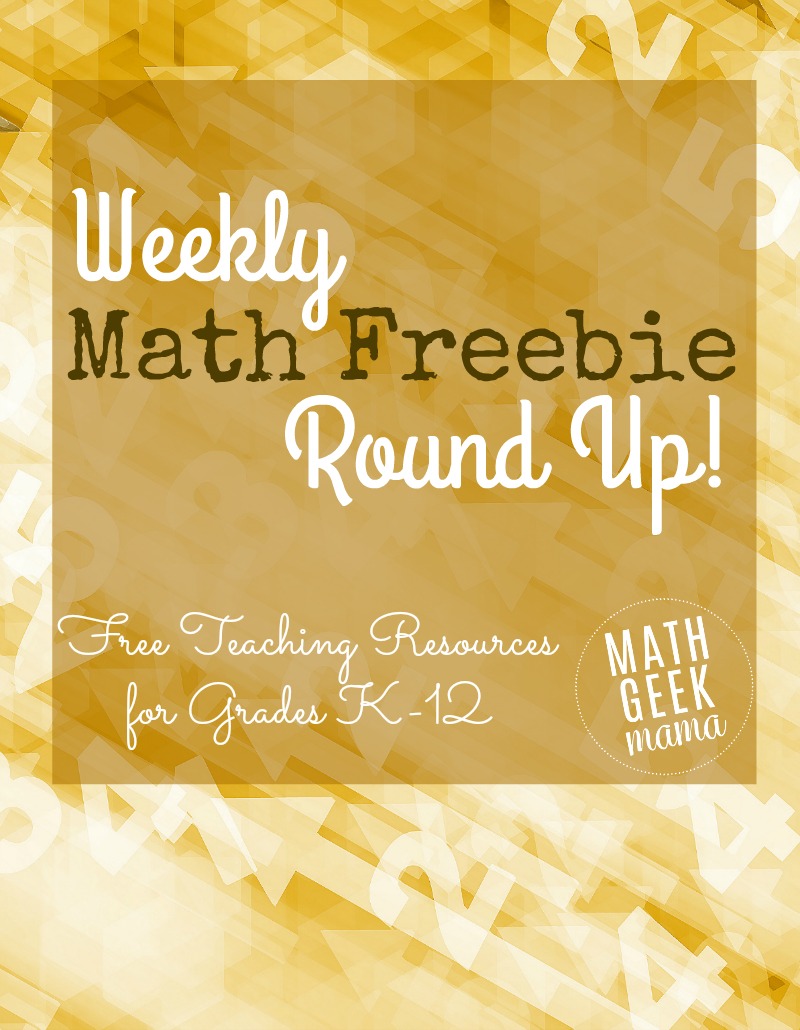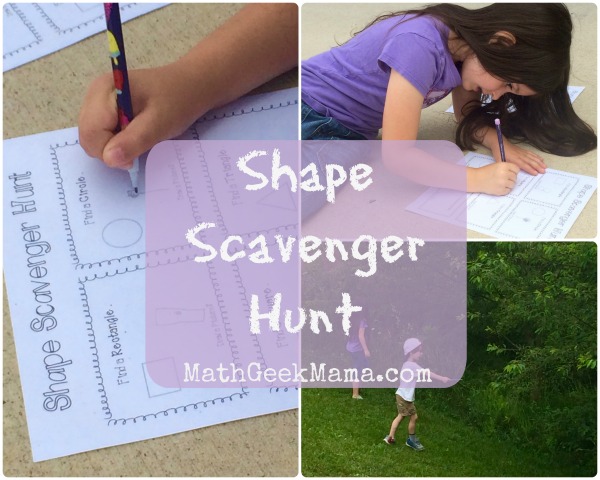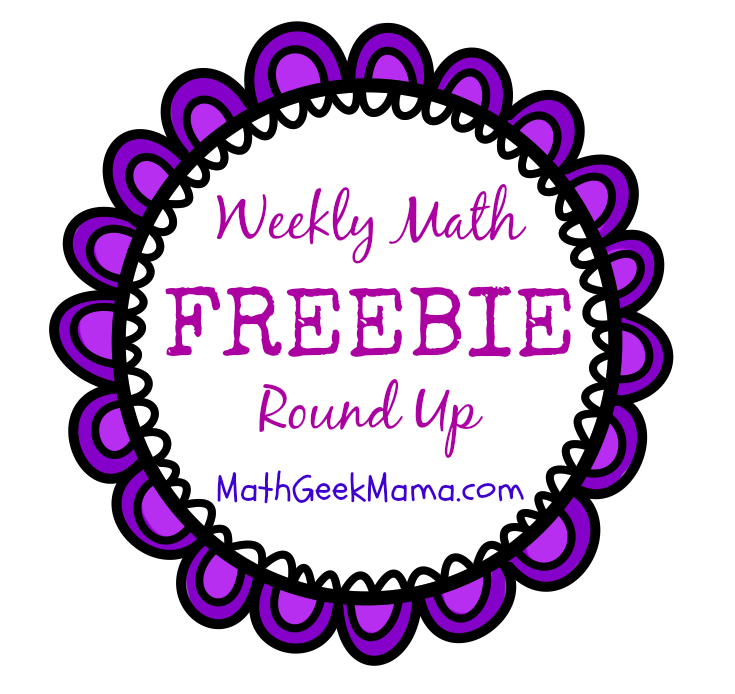{FREE} Kindergarten Math Worksheets | Multiple Skills | Animal Theme
Looking for a quick and easy way to review key Kindergarten math skills? This set of interactive practice pages with a cute safari animal theme is the perfect collection of Kindergarten math worksheets for your little ones.
Do you have themed weeks or unit studies with your Kindergartners? Or do you have an animal unit as part of your science studies? Or maybe you just need some low-prep review to assess your kiddos. This set of Kindergarten math worksheets is easy and FUN for your kids, covering a wide range of math skills. Combine them with hands on activities in the classroom, or send home as easy practice over the summer, or have them ready for low-prep sub plans.
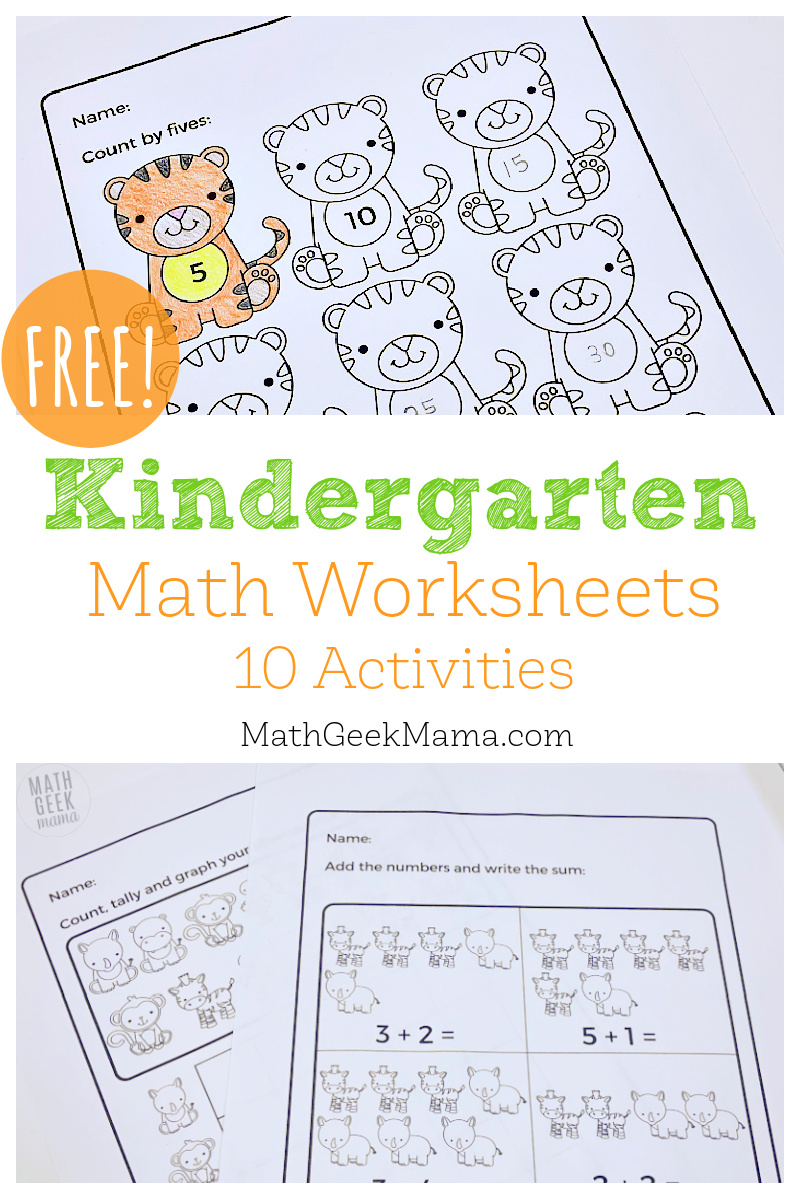
*Please Note: This post contains affiliate links which help support the work of this site. Read our full disclosure here.*
Kindergarten Math Skills Covered:
Although this is designed for Kindergarten, you could use a variety of these worksheets with Pre-K students as well. Learn more about teaching math in Preschool here.
Here are the math skills you’ll find on the included pages:
- Counting and writing numbers
- Addition within 10
- Sequencing (what number comes next?)
- Count and graph (coloring a bar graph)
- Recognizing even and odd numbers
- Counting by 2’s
- Counting by 5’s
- Subtraction within 10
- Count & represent quantities on a ten frame
Altogether there are 10 kindergarten math worksheets in the pdf file.
Prepping the Materials:
For the most part, all you need to do is print the page(s) you need and pass them out to students, along with colored pencils or crayons!
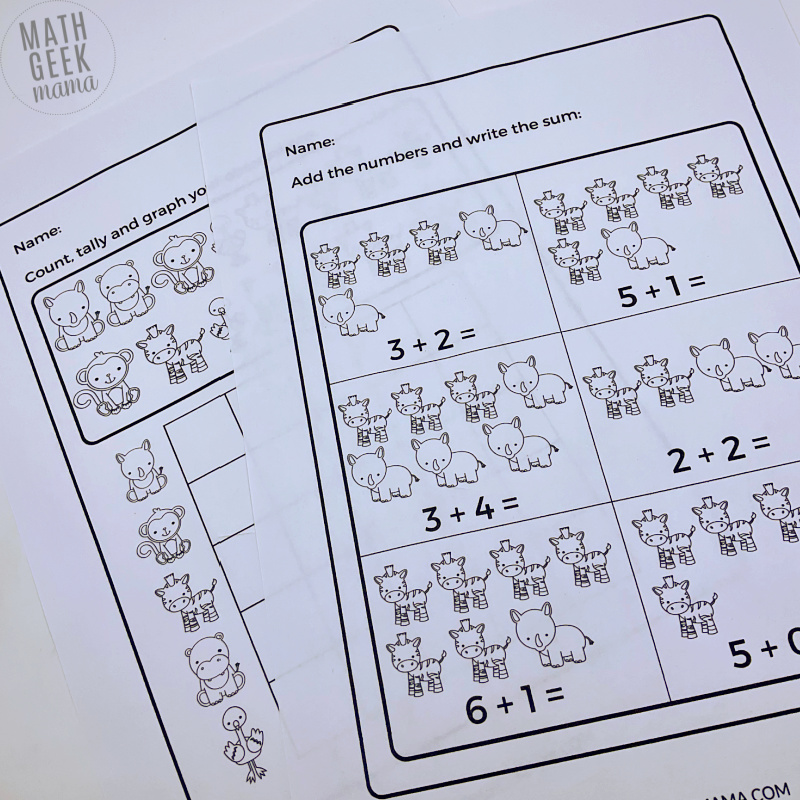
For the even and odd pages, students will need scissors and glue to cut and paste as they sort the even numbers from the odd numbers.
Interactive Kindergarten Math Worksheets:
The goal with these worksheets is to provide meaningful practice in a way that is fun and useful for building a deep understanding.
This means you will find fun safari animals on each page that kids can color, improving their fine motor skills alongside their math skills.
You’ll also find visual models to help kids “see” math, numbers and quantities, because this is essential for the brain to learn and comprehend math.
It also means kids will have the opportunity to engage with math and apply it, rather than simply spitting out answers through rules or memorization.
For example, you will find a graphing page in this download that encompasses a variety of skills in one activity.
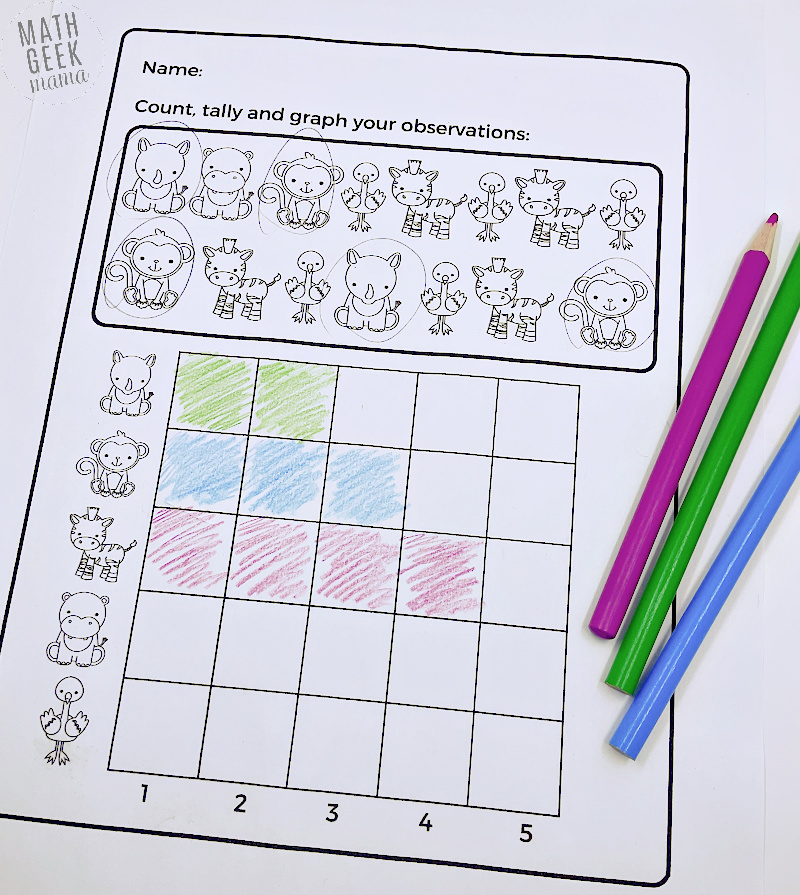
To begin, students must count and color each type of animal. I recommend they keep track of their count using tally marks. This is yet another important subitizing visual for kids to “see” a quantity in a new way.
Then they color in the corresponding number of bars on the bar graph to represent each animal.
This allows them to see how many there are of each type all in one place, and easily compare numbers.
As a follow up, ask your students questions to make sense of the data in their graph, such as:
- Are there more monkeys or zebras? How do you know?
- What number of animals is the greatest? The least? How do you know?
- If there were 2 more rhinos, how many would there be?
- How many more monkeys to we need to make 5? How many more hippos would we need?
Combine the Worksheets with Hands On Materials:
If it’s helpful or necessary, encourage your kids to grab hands on manipulatives to help them solve the problems.
For example, to add or subtract, they can use blocks or other small objects to represent the problem and solve it.
Or when sorting the even and odd numbers, encourage them to count out the total number using blocks and then try to put the blocks into two equal groups.
If they can split it into two equal groups with no block leftover, they know the number is even. Otherwise, it is odd.
Obviously, some of the numbers on the worksheets are too big to count out and divide with hands on objects, but encourage those who are struggling to do so with the smaller numbers first.
Then ask them if they notice any patterns to help them with the bigger numbers.
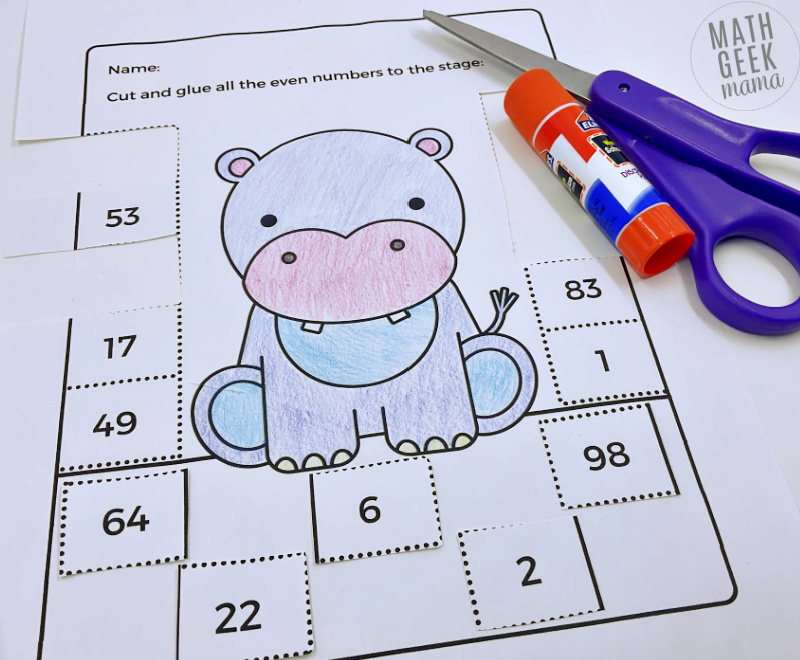
If they’re still struggling, encourage them to keep track of the numbers 1-10 on a white board (sort them even v. odd) and then see if they notice a pattern. If not, continue up to 20.
Lastly, you’ll also find a page to represent numbers in a ten frame. Ten frames are another helpful way for students to visualize numbers, as well as deepen their understanding of our base ten system. It will be essential as they get older that students can recognize ways to “make ten.” This means knowing pairs of numbers whose sum is equal to ten.
As with the graphing exercise, follow up the activity with questions such as:
- How many more giraffes are needed to make ten?
- How can we use the ten frame to solve 10 – 4?
- Can you write an addition equation to represent how many more hippos are needed to make ten?
Overall, I hope this collection of kindergarten math worksheets provides a useful overview of important math skills, whether you use them as end of year review, along with each corresponding math unit, as a homework packet, in your sub plans or any other time of the year!
1, 2, 3, Animals! Counting Book
Looking for a fun picture book to read along with the counting and tracing worksheets? Check out my picture book, 1, 2, 3, Animals!
In this book, kids will hear about and count the animals as they prepare for their show. Then, they count backwards until the show is over!
Ready to get started? Just click the link below to grab it FREE from my shop!



